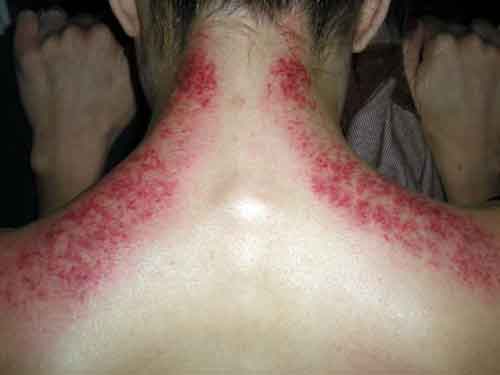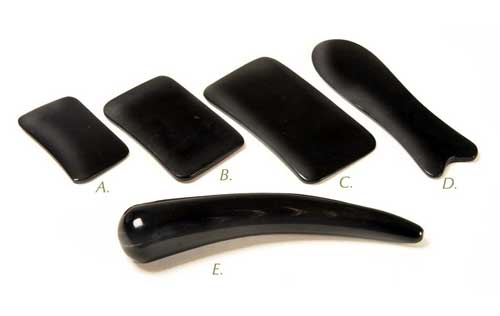Gua Sha is a healing technique of traditional East Asian medicine. Sometimes called ‘coining, spooning or scraping’. Gua sha, defined as “instrument-assisted unidirectional press-stroking of a lubricated area of the body surface to intentionally create transitory therapeutic petechiae called ‘sha’ representing extravasation of blood in the subcutis”.
Modern research shows Gua sha produces an anti-inflammatory and protective effect that persists for days following a single treatment. This accounts for its effect on pain, stiffness, fever, chill, cough, wheeze, nausea and vomiting etc., And why Gua sha is effective in acute and chronic internal organ disorders including liver inflammation in Hepatitis.
The technique is useful in any licensed therapeutic practice and of particular interest to acupuncturists, massage therapists, physical therapists, physicians and nurses who work directly with patients. (thank you to Arya Neilsen, phd for this explanation.)

Why does it look bad?
Therapeutic scraping can look horrendous because the red marks raised by the Gua Sha tool appear so bright and red! It is not always like this but, can be. This is actually the purpose of the treatment. The marks do go but if you don’t want to end up with red marks, please don’t have the treatment. The red marks are very good at moving ‘Qi’ in Chinese Medicine. And also for ‘releasing the exterior’ which is a way we release pathogens from the body, so it could be of use for colds. It has even been of use for Hepatitis and Fibromyalgia with good effect. In some ways it is similar to the red marks produced by Cupping. Don’t worry, the treatment is till going on while you have the red marks on your skin.
Tools
Here are some typical tools. Traditionally they were made out of things like Turtle shell or even Ivory but I made mine from thick, smooth perspex as I don’t agree with using animal products.

To top
